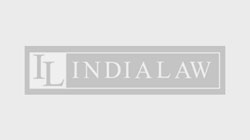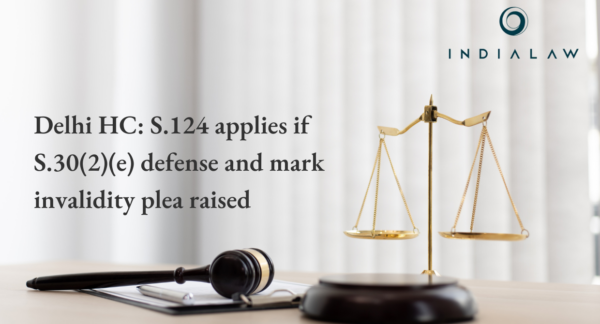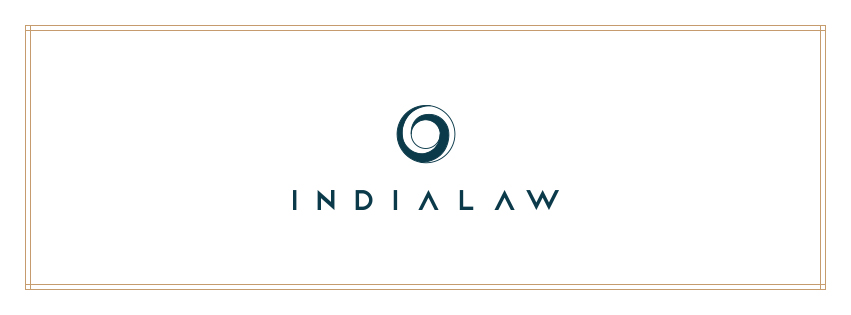Bayer Corp. v. Union of India

By Apoorva Mandhani
The Supreme Court, in Bayer Corporation v. Union of India & Ors.[1], in December, 2014 upheld India’s first compulsory license by dismissing a Special Leave Petition filed by Bayer Corporation.
The Apex Court upheld the decision of the Intellectual Property Appellate Board and the Bombay High Court, sanctioning the grant of a compulsory license for Bayer’s anti cancer drug ‘Nexavar’.
It was for the first time, after India became a signatory to trade related aspects of Intellectual Property Rights (TRIPS) followed by the Doha Declaration in 2001 and the amendments to the said Act in 2003 and 2005 that the issue of Compulsory License had come up for the consideration before the authorities.
Compulsory License Regime in India
Compulsory licensing occurs when a government authorizes an organization other than the patent owner to produce a patented product or process without the patent owner’s consent. It is governed by Chapter XVI of the Indian Patents Act, 2005. The patent owner is remunerated for the license but does not have the option to refuse the license, select the licensee, or determine royalty rates.
The scheme under Chapter XVI of the Act is that it is applicable to a patented product as well as a patented process. According to Section 84 of the Act, an application for the grant of Compulsory License can be made to the Controller on satisfaction of the following two prerequisites-
- An application for compulsory license can be made only after expiration of three years from the date of grant of patent to the patent holder
- The applicant should have put in efforts to obtain a voluntary over the patent from the patent holder on the reasonable terms and conditions.
Further, the application should base such claim on the basis of the contention that all or one of the three conditions, as mentioned under Section 84 (1) are satisfied. The three conditions are:
- reasonable requirement of the public for the patented invention is not being met; or
- The patented invention is not available to the public at reasonably affordable price; or
- That the patented invention is not worked in the territory of India
The Controller needs to be satisfied that prima facie conditions exist for the grant of Compulsory License. In case of grant of a Compulsory License, the terms and conditions of the grant would be in terms Section 90 of the Act.
Facts of the case:
The drug at issue is Sorafenib Tosylate which is sold under the trade name of Nexavar. Nexavar got patented in India, in 2008. An application for compulsory license was then filed by NATCO, at a time when the drug was being sold by Bayer at Rs. 2, 80,000/- per month. NATCO applied to the controller for grant of Compulsory License under Section 84 (1) of the Patents Act, after an expiry of three years, as stipulated under the Act.
CIPLA on the other hand was already selling the drug as Soranib at Rs. 30,000/- per month and presently, at Rs. 54,000/- per month. It was undergoing litigation in Delhi High Court for infringement of Bayer’s patent.
In the Compulsory License order issued by the then Controller General of Patent, a price of Rs. 8,800/- was fixed. NATCO was directed to sell the patented drug at this price and also pay a standard royalty rate of six percent calculated the net price /manufacture. NATCO can sell the drug only in India and has to supply the drug to at least 600 needy patients each year free of charge.
It was concluded that the price charged by Bayer contravened the Patents Act as it was not available to the public at a reasonably affordable price with respect to the purchasing power of the public or in sufficient quantities.
IPAB Decision:[2]
Bayer appealed against the Controller’s order, contending that the Compulsory License was rendered redundant because the drug was already available at a lower price (relying on sale by CIPLA at Rs. 5400/- per month) than the price specified by the Controller.
Bayer hence asserted that if the drug is available in the market at affordable prices, not necessary by the patentee, in such circumstances, section 84 (1) (b) of the Patents Act will not come into picture.
The IPAB however rejected this contention holding that it was not Bayer that was supplying the drug at a reasonably affordable price, especially when Bayer had a case pending against CIPLA for the same drug.
It further supplied an interpretation to the words, ‘patented invention’ as used in Section 84, holding that they refer to:
= the invention that must be made available to the public by the patentee;
= the invention in respect of which reasonable requirements of the public must be satisfied by the patentee and;
= the invention which the patentee must work in the territory of India.
With respect to the requirement of getting the drug “worked in the territory of India”, Bayer had contended that the word “work” would include import and not necessarily local manufacture. IPAB ruled that the inference would depend on a case to case basis and the phrase has a flexible meaning.
The IPAB ruled against Bayer, holding that granting a stay in favor of Bayer would jeopardize the interests of the public who are in need of the drug.
High Court Decision:[3]
Subsequently, even the High Court dismissed Bayer’s petition challenging the grant of Compulsory License.
The major legal question that rose before the High Court was therefore whether the supplies by infringers of the patented drug (Cipla and NATCO in this case) have to be taken into account to determine the satisfaction of the reasonable requirement test?
The High Court’s decision was rendered on the basis of the fact that even after taking into account Cipla’s supplies, the public requirement would not be met.
However, considering it as a pure legal issue, the Court held that the obligation to meet the reasonable requirement of the public is of the patent holder alone, either by itself or through its licensees.
With respect to the requirement of getting the drug “worked in the territory of India”, it was ruled that when a patent holder is faced with an application for Compulsory Licence, it is for the patent holder to show that the patented invention is working in the territory of India by manufacture or otherwise. However, the patent holder would nevertheless have to satisfy the authorities under the Act as to why the patented invention was not being manufactured in India keeping view Section 83 of the Act. In such circumstances, “worked in India”, according to the Court, could not mean only manufacture in India.
Bayer had conceptualized a dual pricing system under the Patient Assistance Program. Under PAP, when a patient bought three dosages of the patented drug, he was given the remaining tablets for the entire month, free of cost. However, this concept was not accepted as a defence for Section 84 (1) (b) of the Act, which requires that the patented drug should be made available to the public at a reasonably affordable price i.e. to any member of the public tendering the price.
Section 84(7) of the Act provides a deeming fiction which deems that reasonable requirement of the public is not satisfied, if the demand for patented article is not met to an “adequate extent”. The Court held that so far as medicines are concerned, the adequate extent test has to be 100% i.e. to the fullest extent. It observed, “Medicine has to be made available to every patient and this cannot be deprived/scarified at the altar of rights of patent holder”.
Supreme Court decision:
While dismissing the Bayer’s Special Leave Petition, the Supreme Court noted that:
“In the facts of the present case, we are not inclined to interfere. The Special Leave Petition is dismissed, keeping all questions of law open.”
The decision is open ended, the implications of which are unknown. Keeping all questions of law open would mean that any subsequent challenge to interpretations as adopted by the High Court can change the existing interpretations. This decision by the Supreme Court hence restores the uncertainty that was always attributed to the grant of Compulsory License in India.
Criticism:
Since compulsory licensing limits the right of exclusive ownership conferred by patents, it has long been controversial.[4] The consensus on its implementation hasn’t been achieved yet.
The entire concept of grant of Compulsory Licenses has been hailed as “damaging to the industry in the long term”. According to the President of Organization of Pharmaceutical Producers of India, Compulsory Licenses should only be used in “exceptional circumstances such as times of a national health crisis.”
The grant of Compulsory Licence to NATCO by the Controller General has garnered a response from the United States Patent and Trademark Office as well, according to which, “compulsory licenses dissuade pharmaceutical and biotech companies from innovating” and that the grounds for granting a compulsory license in the case of NATCO “did not meet international standards”[5]. The irony of this statement roots from the fact that the largest number of compulsory licenses has probably been granted in Canada, under the 1969 law amendment that authorized automatic licenses on pharmaceuticals, and in the USA, under antitrust laws.[6]
The Agreement on Trade Related Aspects of Intellectual Property Rights (TRIPS) allows members the right to grant compulsory licenses and determine the grounds for such grant. This is usually used in cases of ‘extreme urgency’ or ‘national emergency’, and in such cases may be granted without first trying for voluntary licenses.
However, the Doha Declaration states that “Each Member has the right to grant compulsory licenses and the freedom to determine the grounds upon which such licenses are granted”. Therefore, there are no restrictions per se on the countries for the grant of a compulsory licence.
After the grant of a Compulsory License to NATCO, India was criticized for its “anti-IP” policies on a large scale. However, the subsequent refusal for grant of Compulsory Licence for Bristol Myers-Squibb’s Dasatinib and Roche’s Trastuzumab tells a different story. BDR’s request for Compulsory Licence for Dasatinib was rejected because it had failed to try to obtain a voluntary licence from Bristol Myers-Squibb, as necessitated by Section 84. Bayer’s case was scrutinized by the judiciary at various levels, in compliance with domestic and international laws.
Hence, despite such criticisms, India’s patent regime is striving to adhere to legally justifiable solutions, rather than blindly trampling on the rights of patent holders.
[1] Special Leave to Appeal (C) NO(S). 30145/2014
[2] Order (No. 45 of 2013)
[3] Bayer Corporation v. Union of India & Ors., Writ Petition No.1323 of 2013
[4] Robert A. Gorman & Jane C. Ginsburg, Copyright 498- 505 (6th ed. 2002).
[5] Rowland, Shelley, “India’s IP Appellate Board endorses compulsory license of patented cancer drug to generic manufacturer” Available at: http://baldwins.com/india-s-ip-appellate-board-endorses-compulsory-license-of-patented-cancer-drug-to-generic-manufacturer/
[6] “Integrating Public Health Concerns Into Patent Legislation In Developing Countries”, Available at http://apps.who.int/medicinedocs/pdf/h2963e/h2963e.pdf




